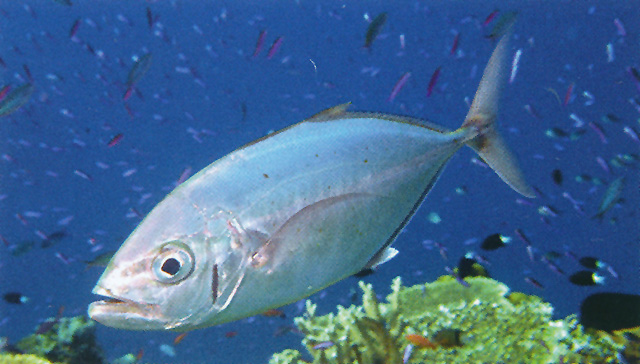| Carangidae (Jacks and pompanos), subfamily: Caranginae |
| 50 cm TL (male/unsexed) |
|
reef-associated; marine; depth range 0 - 200 m |
| Indo-Pacifc: from the Red Sea and the eastern coast of Africa to Fiji and Samoa, except the Persian Gulf. |
|
Dorsal spines (total): 9-9; Dorsal soft rays (total): 22-24; Anal spines: 3-3; Anal soft rays: 18-20. Description: Greyish dorsally, silvery on sides, sometimes 6-7 dusky oblique bars on upper side and large adult occasionally with scattered dark blotches or a few small yellow spots on side; posterior margin of opercle distinctly dark. Body oblong and compressed, dorsal and ventral profiles equally convex. Breast completely scaly. LL scutes 11-18. (Ref. 90102). Distinct black bar on the edge of the preopercle, and nearly, scaled breast (Ref. 37816). |
| Adults occur in shallow water along edges of steep outer reef and lagoon slopes. Found singly or in groups (Ref. 9710). Minimum depth reported taken from Ref. 128797. |
|
Least Concern (LC); Date assessed: 09 March 2015 Ref. (130435)
|
| harmless |
Source and more info: www.fishbase.org. For personal, classroom, and other internal use only. Not for publication.
